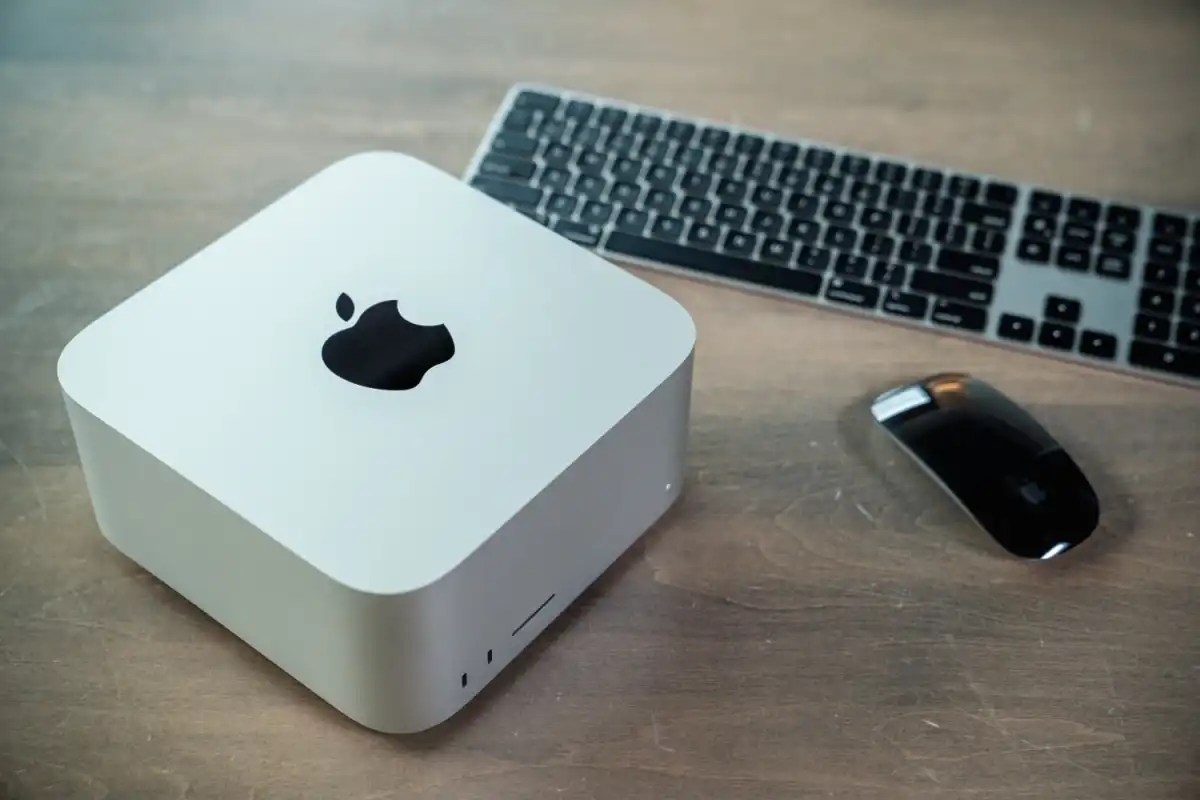What’s in a surname? All of Apple’s product lines have some mix of Air and Pro and now Max and Studio, with each bringing different capabilities to the table depending on what you’re buying. We’ll help you sort it all out and tell one Pro from the next Max.
Mini
For the most part, mini seems smaller in Apple’s terminology, both literally and performance-wise. Apple sells three products in the mini family.
iPhone 13 mini
What it costs: $699-1,029
What it means: Small display, mid-range performance and features
The iPhone 13 mini is a smaller version of the iPhone 13, with the same processor, camera, and specs (aside from the battery). It has a 5.4-inch display versus 6.1 inches on the iPhone 13 and a slightly smaller battery, but otherwise, mini here means what you expect: smaller.

iPad mini
What it costs: $499-$799
What it means: Small display, mid-range performance and features
The iPad mini is essentially a smaller version of the iPad Air with one exception: It’s powered by the A15 processor in the iPhone while the iPad Air has the same beefy M1 processor as the Mac and iPad Pro. The iPad mini got an 8.3-inch display (versus 10.9-inch on the Air), but everything else is the same: 12MP cameras, USB-C port, 5G networking, and 2nd generation Apple Pencil support.
Mac mini
What it costs: $699-$2,099
What it means: Small size, entry-level to mid-range performance
The Mac mini is Apple’s smallest desktop Mac, about a third of the height of the Mac Studio. It has an M1 processor (versus the much more high-end M1 Max and M1 Ultra) and costs about a third of the price. The highest-end Mac mini (which we wouldn’t recommend buying until it gets an Apple silicon update) is nearly the same price as the entry-level Studio, so they match up nearly perfectly.

You don’t have to look too hard to see where the Mac mini, left, gets its name.
Air
Apple’s use of the Air name is a little more confusing. The MacBook Air is decidedly entry-level but the iPad Air is clearly mid-range. And while the MacBook Air is the lightest Mac laptop you can buy, the iPad Air isn’t all that lighter than the iPad and 11-inch iPad Pro.
iPad Air
What it costs: $599-$899
What it means: Upper-range performance and mid-range features
At $599, iPad Air costs quite a bit more than the most budget-friendly iPad, which begins at $329. But you’re getting a lot more for your money: a Liquid Retina display, M1 processor, Apple Pencil 2 support, sub-6GHz 5G, USB-C, and an array of colors: space gray, pink, purple, starlight, and blue.

The iPad Air is thin and light like the MacBook Air, but it’s more powerful than its name implies.
IDG
MacBook Air
What it costs: $999-$2,049
What it means: Entry-level performance
The Air has been a mainstay in Apple’s laptop lineup since its dramatic introduction in January 2008, but Apple hasn’t made any major improvements to the MacBook Air since 2018, when it got a redesign and a retina display. While it started out as a higher-end machine, the current model is a great value for $999 with an M1 processor, 256GB of storage, a Magic Keyboard, and tremendous battery life.
Pro
Pro is the most confusing name in Apple’s parlance. It clearly means better and sometimes best, but not all Pro devices are created equally. The iPhone Pro and AirPods Pro are relatively affordable upgrades from their non-pro compatriots, but the 12.9-inch iPad Pro is quite pricey, and the Mac Pro and Pro Display XDR are out of reach for most people. And the 13-inch MacBook Pro is basically an Air compared to the 14-inch and 16-inch models.
M1 Pro
What it costs: $1,999-$5,299
What it means: Mid-range performance
In December 2020, Apple started the transition to its own processors with the M1 chip. Not even a year later, the exponentially faster M1 Pro was announced for the 14-inch and 16-inch MacBook Pro, delivering nearly twice as much speed as the M1. As it stands, it’s only available in the 14-inch and 16-inch MacBook Pro, but we expect it to come to the Mac mini as well.
AirPods Pro
What it costs: $249
What it means: High-end design and features
The AirPods Pro are one of three different types of AirPods Apple sells, but they stand alone. Unlike the cheaper AirPods models, the AirPods Pro offers active noise cancellation with transparency mode and a more secure fit than regular AirPods thanks to the use of silicon tips.

iPhone 13 Pro
What it costs: $999-$1,499
What it means: High-end features
Apple introduced its iPhone Pro line with the iPhone 11 and each model has had the same distinctions: a better camera, better screen, stainless steel finish, and larger 6.7-inch “Max” option. The latest iPhone 13 Pro finally brought the smooth stylings of ProMotion to the iPhone as well as a slightly better A15 processor with a 5-core GPU, better battery life, and an upgraded camera system. You also get different colors available in Sierra Blue, silver, graphite, and gold colors.
iPad Pro
What it costs: $799-$1,999
What it means: Upper-end performance and features
While there are two sizes of iPad Pro, the 12.9-inch model is the more “Pro” of the two. The 11-inch model has a similar Liquid Retina display to the iPad Air (but with the addition of ProMotion), but the 12.9-inch model ups the ante with a Liquid Retina XDR display that uses mini-LED backlighting to deliver better brightness and superior color accuracy. Otherwise, the iPad Pro is very similar to the iPad Air with some slight upgrades: mmWave 5G, higher RAM and storage options, and a Thunderbolt 3 port.
MacBook Pro
What it costs: $1,299-$6,099
What it means: Mid- to upper-end performance
The MacBook Pro family runs the gamut of pricing, performance, and features. At the low end, there’s the 13-inch MacBook Pro with an M1 processor starting at $1,299, and at the high end is the 16-inch MacBook Pro with a Liquid Retina XDR display and M1 Pro processor starting at $2,499, nearly twice as much. The difference between the 13-inch and the 16-inch MacBook Pro is so great that it’s hard to understand how they both share the same surname.

IDG
Mac Pro
What it costs: $4,999-$52,199
What it means: Ultra high-end performance
Apple’s workstation hasn’t had a meaningful update since 2019 and still starts at $5,999. It’s certainly a beefy machine, with up to a 28-core Intel Xeon W processor, up to 1.5TB of DDR4 ECC memory in 12 DIMM slots, and very high-end graphics options. It’s also Apple’s only modular Mac, with eight accessible PCIe slots. It’s slower than some of the Apple silicon-based Macs but also much more expandable and attractive to demanding pro users.
Pro Display XDR
What it costs: $4,999-$6,998
What it means: Ultra high-end performance
Pro is actually the display’s first name, but it’s no less premium than the Mac Pro. The Pro Display XDR is a 32-inch Retina 6K (resolution of 6016×3384, 1,000 sustained nits of brightness, and 1,000,000:1 contrast ratio) that starts at the very high end of available 32-inch monitors, and that’s even before you add pricey options such as nano-texture glass for $1,000, a Pro stand for $999 or a VESA mount for $199.
Max
For the most part, Max means bigger—more cores, fuller sound, bigger screen.
M1 Max
What it costs: $1,999-$6,099
What it means: Upper-end performance
The M1 Max, which was announced simultaneously with the M1 Pro in October, has a GPU that’s four times faster than the M1’s GPU. The chip supports up to 64 GB of unified memory, and has twice the memory bandwidth of the M1 Pro and six times the bandwidth of the M1, up to 400GB/s. Read more about our projections of the future of Apple’s chips for an idea of what’s coming down the pipeline over the next few years.
AirPods Max
What it costs: $549
What it means: High-end design and features
Apple’s high-end over-the-ear wireless headphones bring active noise cancellation and a premium design but come at a hefty price. They’re also heavy at 384 grams, as compared to the drastically lighter four-gram AirPods and AirPods Pro. Plus the AirPods Max lacks a 3.5mm jack input, so you’ll have to pony up for a Lightning to 3.5mm cable if you want to enjoy them without the Bluetooth latency.

iPhone 13 Pro Max
What it costs: $1,099-$1,599
What it means: Large display, high-end performance
The rare product with two surnames, the iPhone 13 Pro Max is exactly what its name implies: A larger version of the iPhone 13 Pro. With a 6.7-inch display compared to a 6.1-inch one, the iPhone 13 Pro Max is for people who want a bigger and better display, better camera, and longer-lasting battery life. While Apple has added extra features to the Max in previous years, the iPhone 13 Pro Max is just bigger.
Studio
A revival of an older name, Studio now means high-end performance without completely breaking your budget.
Mac Studio
What it costs: $1,999-$7,999
What it means: High-end performance
The compact Mac Studio was announced in two standard configurations during Apple’s March “Peek Performance” event: a $1,999 model with M1 Max (10-core CPU), 24-core GPU, 16-core Neural Engine, 32GB of RAM, and 512GB SSD; and a $3,999 version with M1 Ultra (20-core CPU), 48-core GPU, 32-core Neural Engine, 64GB of RAM, and 1TB SSD. It’s substantially cheaper than the Mac Pro, but thanks to Apple silicon, is just as fast as those multi-core Xeon W processors at a fraction of the price. Apple is reportedly working on a new Mac Pro with Apple silicon, but for now, Studio is the new Pro, at least when it comes to desktop Macs.

Willis Lai/Foundry
Studio Display
What it costs: $1,599-$2,299
What it means: Mid-range performance
The 27-inch Apple Studio Display is a more affordable version of the Pro Display XDR, but like the Mac Studio, still isn’t cheap. It has an A13 Bionic processor and runs iOS to power its 12MP webcam with Center Stage support. There are also six built-in speakers with support for Spatial Audio when using Dolby Atmos and the same nano-texture glass as its ultra-high-end sibling.
Ultra
Apple only has one Ultra product, but it’s the fastest and most expensive chip it makes.
M1 Ultra
What it costs: $3,999-$7,999
What it means: The highest-end performance
And now, there’s a new surname in M1 Ultra, which is a configuration of two Max chips with a combined 2.5TBps of bandwidth in the highest configuration of the Mac Studio. We don’t know if the Ultra name will be used in other products—a Mac Ultra perhaps—but if it is, you can expect it to be the ultimate flagship.
from Macworld.com https://ift.tt/RafOBhn
via IFTTT